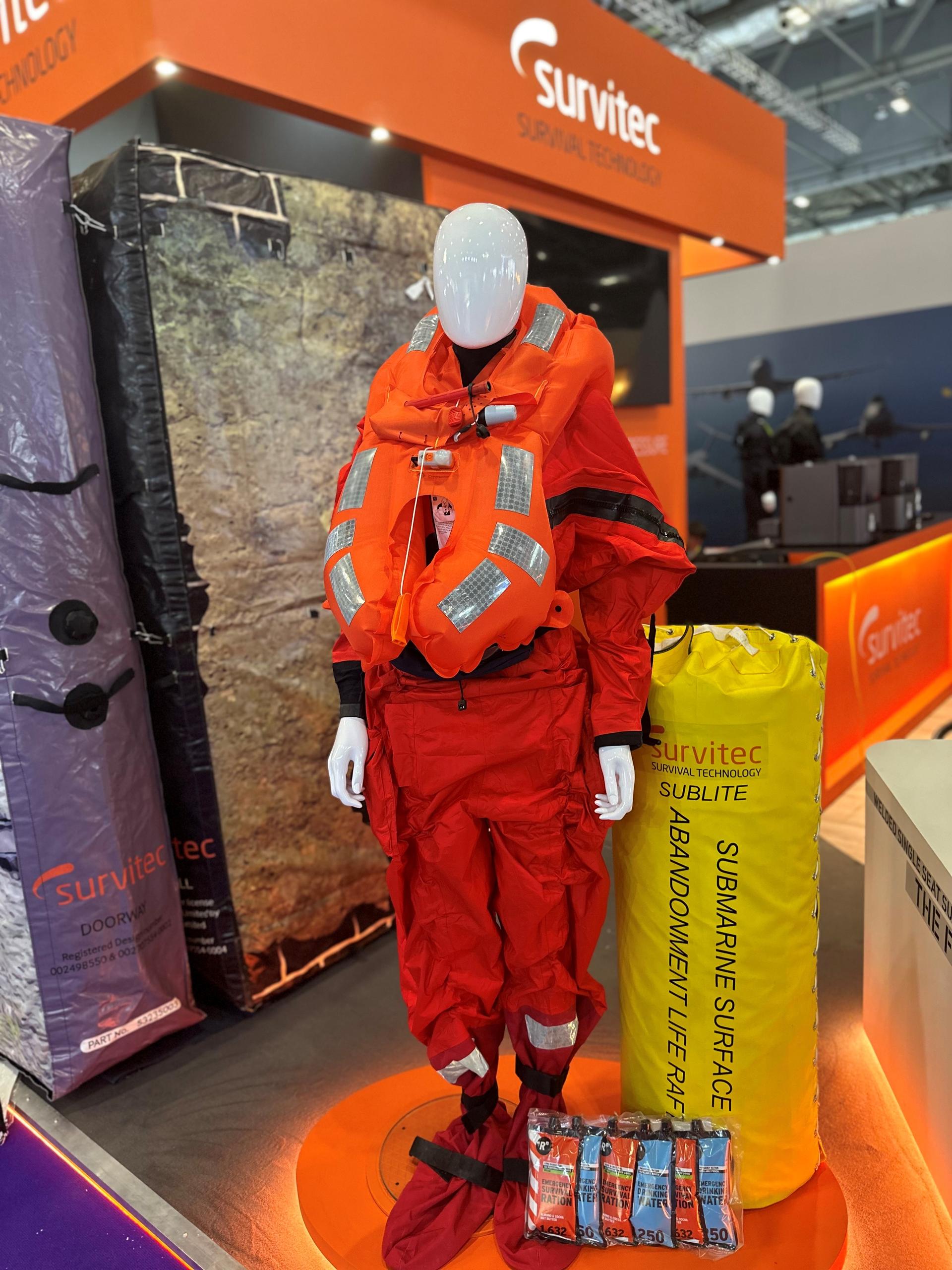Survitec unveils Sublite at DSEI

Above:
The Sublite launched today at DSEI and is pictured alongside the Personal Abandonment Lifejacket and Suit (PALS) and ration solution.
Courtesy Survitec
The new Sublite, launched today at DSEI, enables faster and more efficient crew evacuation due to its lightweight design (40kg) and quick-release deployment system. Ergonomically designed with human factors considered for easy transportation within the confines of the submarine, Sublite facilitates easy carrying of the liferaft below decks and through standard submarine escape and conning towers.
Steve Thorpe MBE, Submarine Escape Category Manager at Survitec and former Royal Navy Submariner, said: “Submariners are trained and equipped with the means of safe evacuation from a submerged submarine, by tower escape or by rescue, in the event of an uncontrollable emergency where life is deemed unsustainable onboard the DISSUB (disabled submarine).
“However, for surface abandonment, many submarines globally do not facilitate suitable equipment for such a scenario. Utilising proven aerospace technology, we've created a solution to address this challenge. The result is Sublite, a portable, carry-on multi-seat liferaft for surface abandonment, to improve submariner survival."
Sublite’s portability brings significant benefits, said Thorpe. “Sublite is a high-operational impact product. It offers greater affordability than a fixed submarine liferaft and provides an alternative to retrofitting fixed liferafts in legacy-class submarines, which isn’t always feasible.”
Thorpe continues, “It offers a financially viable solution to bridge an operational shortfall in surface abandonment, putting submariner safety first. Future submarines, for example, the Royal Navy Dreadnought class, have fixed multi-seat liferafts incorporated in the design and build process, ensuring submariner safety in every scenario. Many legacy submarines globally do not have this design feature incorporated.”
A technical working paper, Surface Abandonment from Royal Navy Submarines, by industry experts QinetiQ, states that survival rates are significantly enhanced with multi-seat liferafts. This is due to “improved crew morale, conservation of heat, pooling of skills, knowledge and resources and improved visibility of the raft for SAR forces,” and recommends the fitting of multi-seat liferafts to Royal Navy submarines.
Sublite is part of Survitec's submarine surface abandonment offering to improve survivability. The largest liferaft in the Sublite range can accommodate up to 48 people, with varying sizes available depending on the end user’s requirements. It is designed to be compatible with Survitec’s Personal Abandonment Lifejacket and Suit (PALS).
PALS is designed with a focus on several key areas of usability. Thorpe added, “It is easily stowed onboard in its own individual valise and can be quickly donned when required. Used in conjunction with Sublite, it will improve submariner safety and survival chances.”
Survitec also offers high-calibre rations for use in surface abandonment or submarine escape scenarios to provide sustenance for submariners at sea and preserve life until rescue.
“There is an operational gap in submariner safety, which this solution addresses, improving survival chances when surface abandonment occurs,” concluded Thorpe. “ Safety, protection and survivability is increased for submariners at sea.”
The Sublite, PALS and ration solution can be used on any submarine by any submariner. PALS is currently in use by a NATO nation, which also uses the Sublite forerunner at sea.












